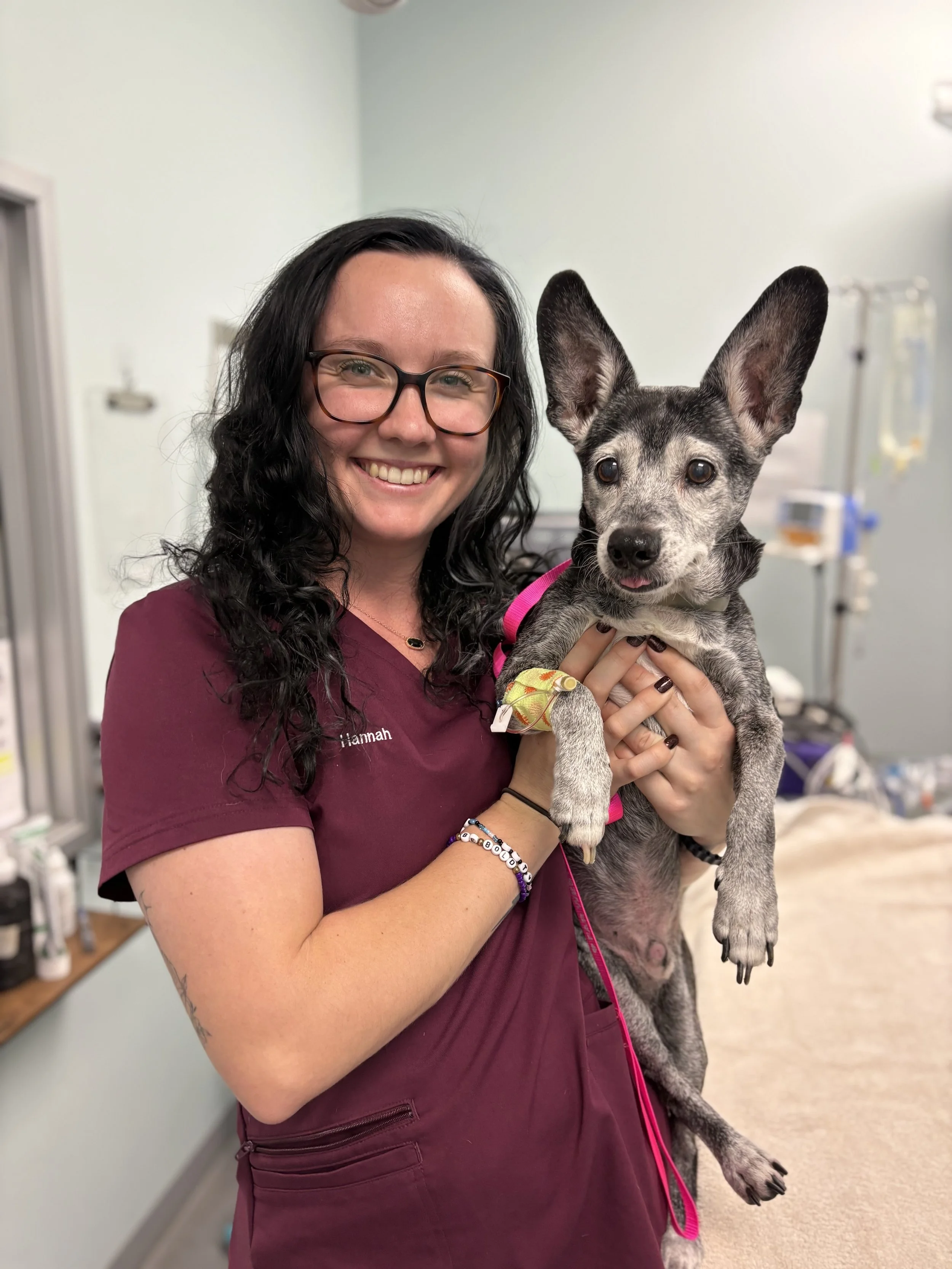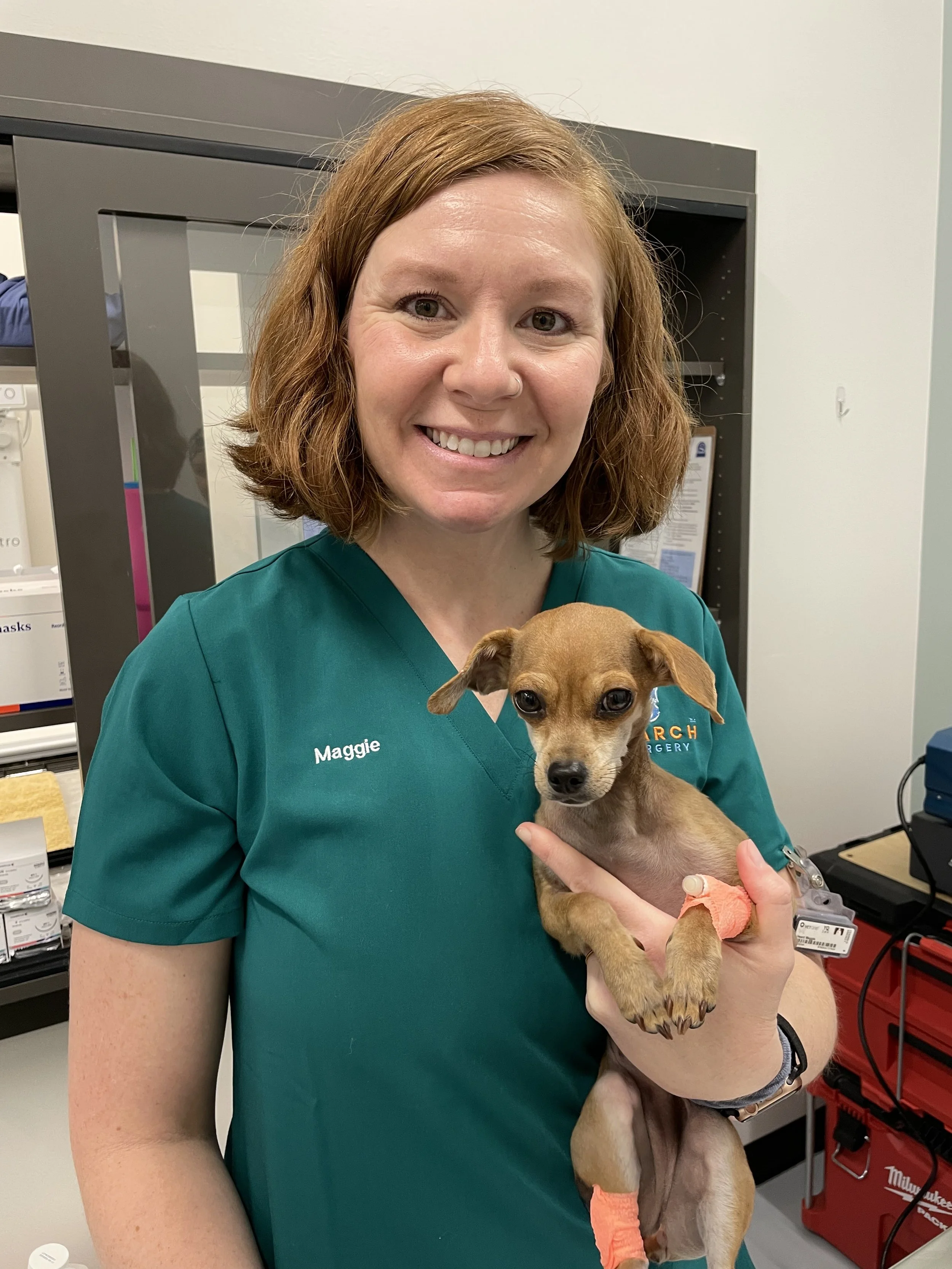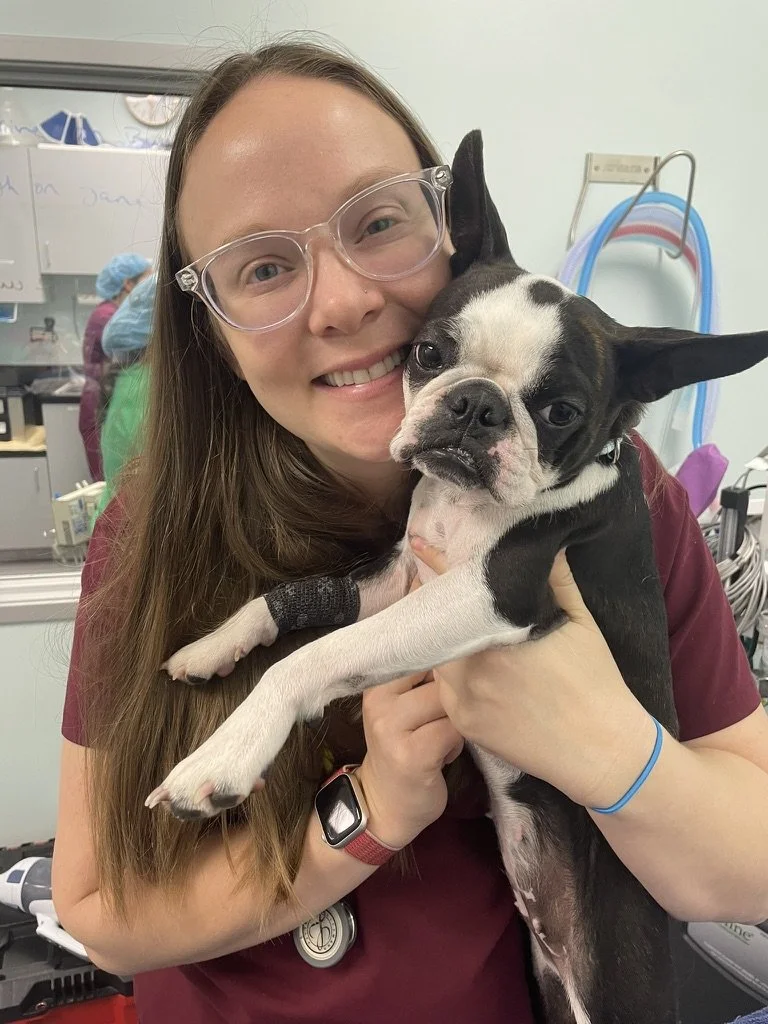Frequently Asked Questions
Hannah and Talus getting ready for his surgery!
Maggie with Ophelia before her surgery!
Dr. Bascuñán and Peppa getting some snuggles in!
-
To become a board-certified small animal surgeon in the United States, a veterinarian must complete an undergraduate degree followed by veterinary school, complete a one-year rotating internship, and then a three or four year surgical residency under ACVS-approved supervision.
After completing the residency and publishing research, the veterinarian must pass the rigorous American College of Veterinary Surgeons (ACVS) board certification exams, including a surgical competency examination.
Finally, upon successfully passing all requirements, the veterinarian earns the designation of a Diplomate of the American College of Veterinary Surgeons (DACVS).
After becoming board-certified, it is required to obtain 100 points of approved continuing education per each 5 year cycle in order to maintain the status.
-
We offer a wide range of orthopedic and soft tissue procedures including mass removals, cranial cruciate ligament repairs (TPLO or lateral suture), MPL corrections, brachycephalic airway corrections, anal sacculectomy, abdominal exploratory, and more. Your primary veterinarian can help determine if your pet’s condition is appropriate for our surgical services.
-
Your pet will have their surgery at your primary veterinary clinic! We bring all the instruments, equipment, and a highly experienced board-certified surgeon with her qualified technicians right to you.
-
We utilize advanced, individualized anesthesia protocols to ensure your pet’s safety and comfort throughout their surgical procedure. Our approach includes comprehensive pain control, using a combination of medications and techniques — such as local blocks, anti-inflammatories, and post-operative pain relief in order to keep your pet as comfortable as possible.
-
Your pet will recover under the care of the skilled technicians of your primary veterinary clinic until they are ready to go home. We provide detailed discharge instructions, and follow-up guidance to ensure a smooth recovery.
-
We’re here for you! For any non-urgent questions, you can call or text us — we’ll respond within 24 hours. For urgent concerns, please contact your primary veterinarian or the nearest emergency clinic.
-
Yes! We understand that this is a challenging time and you are looking forward to your pet returning to their normal day-to-day routine. However, we do not want your pet to be able to reach their surgical site and compromise it in any way. Until you receive further instruction from your primary veterinarian, your pet MUST wear the e-collar at all times.
-
Monarch Pet Surgery will bill your primary veterinary clinic for our portion of the procedure, so a full estimate will need to come from your primary veterinarian.




